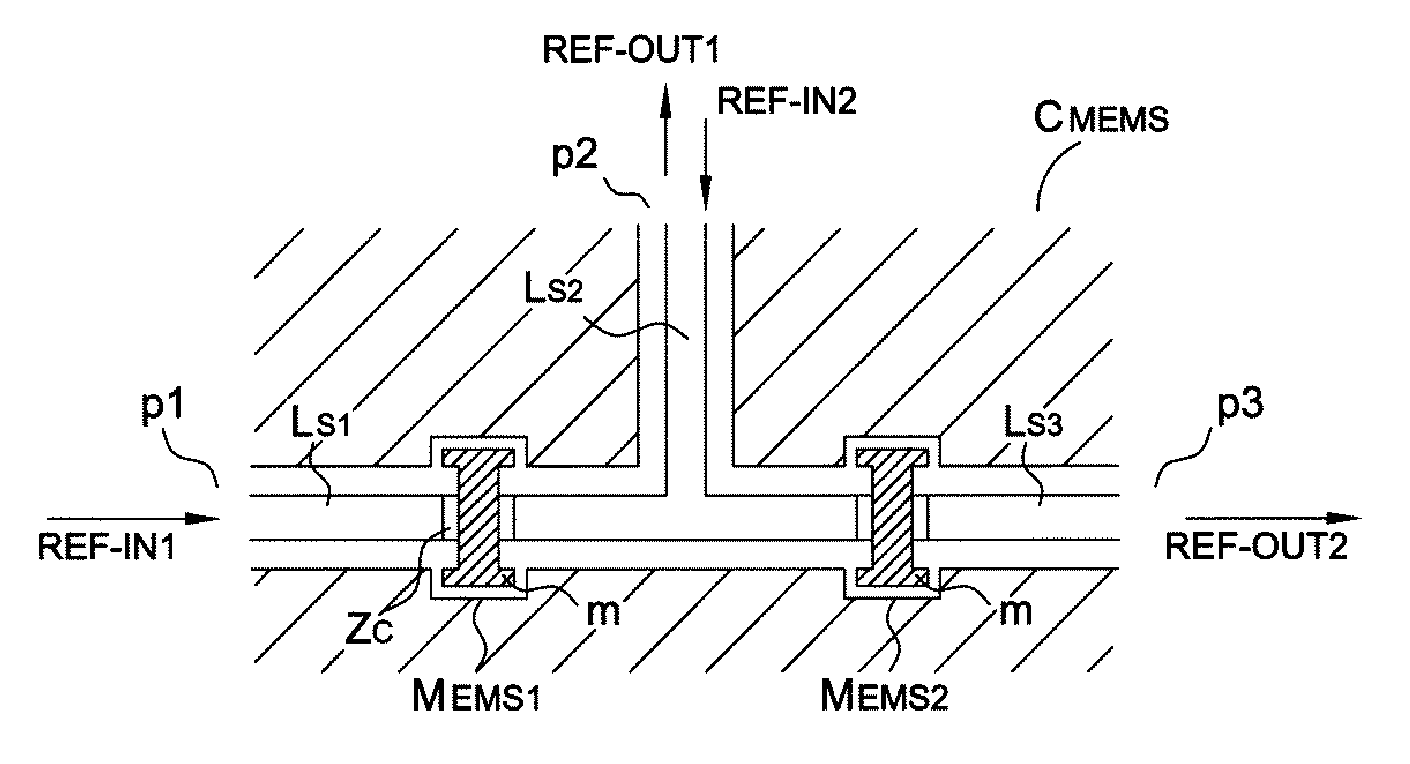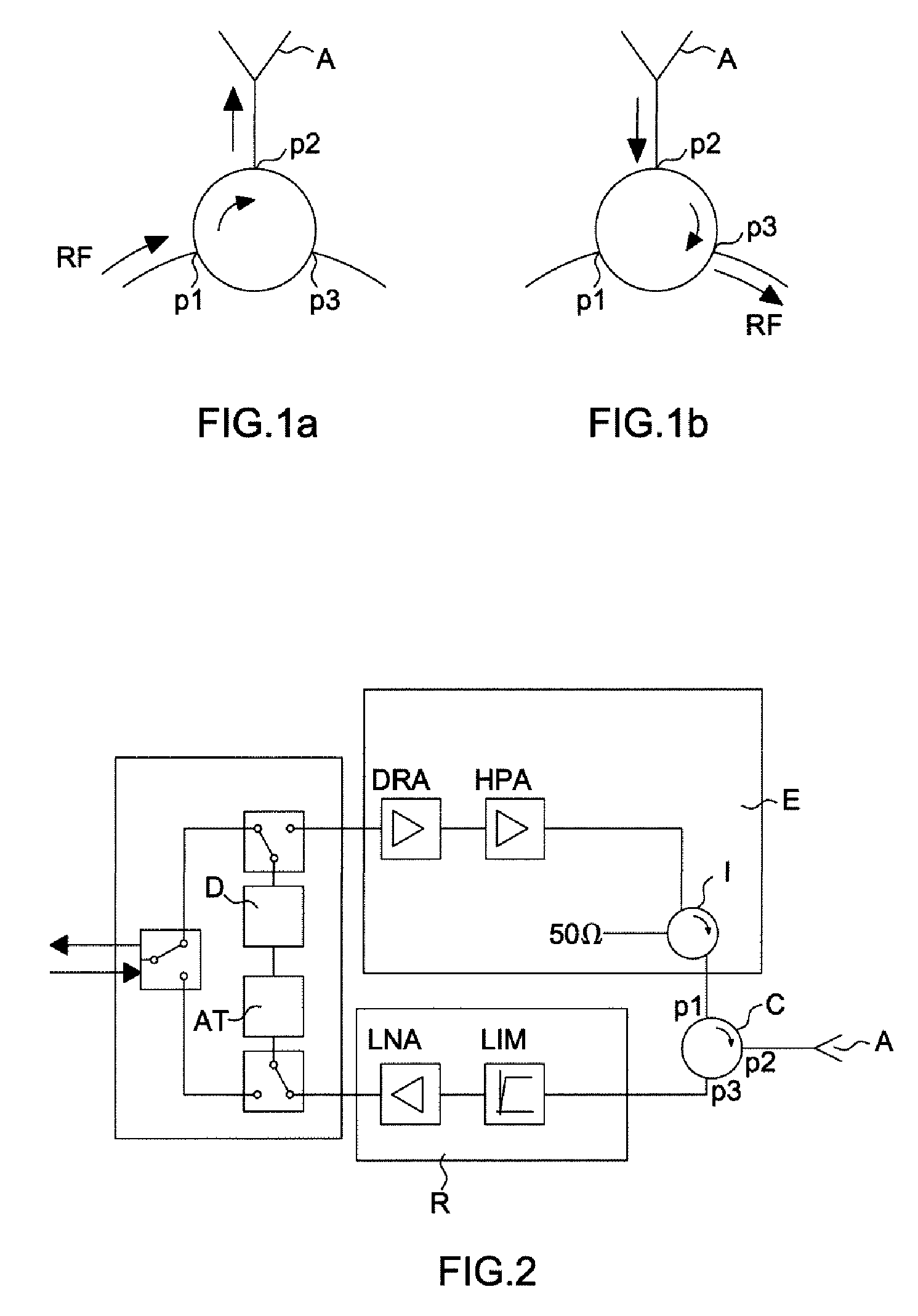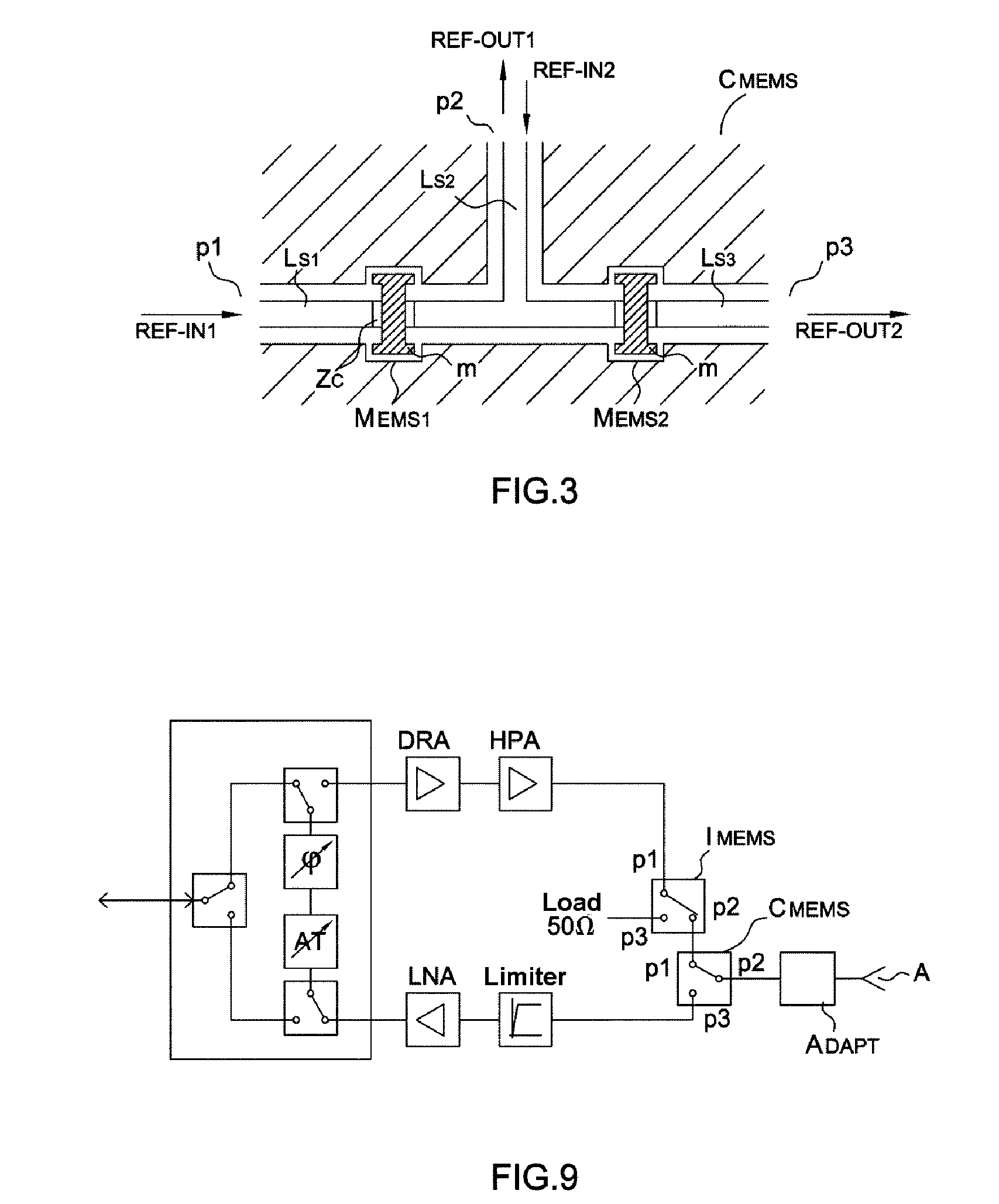Radiofrequency or hyperfrequency circulator
a radiofrequency or hyperfrequency circulator technology, applied in the direction of coupling devices, electrical equipment, waveguide type devices, etc., can solve the problems of radiofrequency circulators used, ferromagnetic circulators, serious malfunctions or even destruction of these components, etc., to reduce production costs, simplify the design of circulators, the effect of occupied surface area and electrical power dissipation
- Summary
- Abstract
- Description
- Claims
- Application Information
AI Technical Summary
Benefits of technology
Problems solved by technology
Method used
Image
Examples
Embodiment Construction
[0041]A circulator CMEMS according to the invention is described with reference to FIGS. 3 to 9. As illustrated in FIG. 3, the circulator CMEMS comprises two identical micro-switches of the series type. A first micro-switch MEMS1 is disposed in order to allow the transmission of a radiofrequency or microwave signal from an input port p1 via a signal line LS1 to a port p2 designed to be connected to an antenna, via a second signal line LS2. A second micro-switch MEMS2 is disposed in order to allow the signal transmission from the second port p2, via the signal line LS2 to an output port p3, via a third signal line LS3.
[0042]The entire circulator, notably with the micro-switches and the signal lines, is formed on the same base substrate.
[0043]Generally speaking, each micro-switch of the series type comprises an assembly membrane—dielectric material—control electrode that forms a variable capacitor for which the membrane and the electrode form the plates. The control electrode is dispo...
PUM
 Login to View More
Login to View More Abstract
Description
Claims
Application Information
 Login to View More
Login to View More - R&D
- Intellectual Property
- Life Sciences
- Materials
- Tech Scout
- Unparalleled Data Quality
- Higher Quality Content
- 60% Fewer Hallucinations
Browse by: Latest US Patents, China's latest patents, Technical Efficacy Thesaurus, Application Domain, Technology Topic, Popular Technical Reports.
© 2025 PatSnap. All rights reserved.Legal|Privacy policy|Modern Slavery Act Transparency Statement|Sitemap|About US| Contact US: help@patsnap.com



